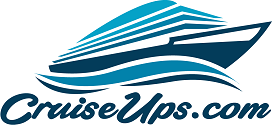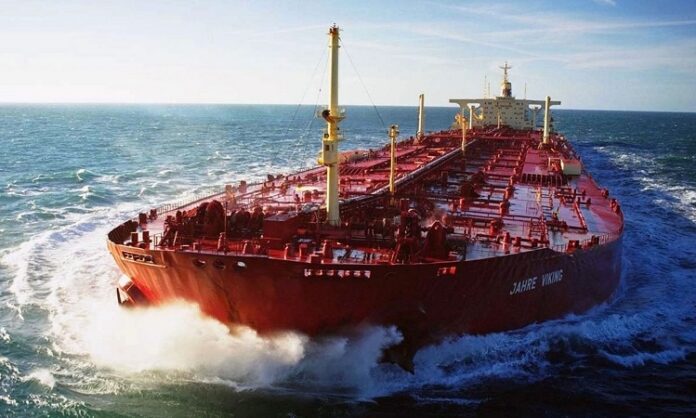You must be aware of the story when the largest passenger ship Titanic sank. The ship that was said to be “unsinkable” but it sank on its first sail. Another story that is not so familiar but is more epic and interesting is the story of the ship Seawise Giant. The ship that was largest in size and approximately twice the size of Titanic. The great ship sank to rise back to the ocean surface and sail again.
Here is the story of the Seawise Giant, the largest ship that has ever sunk.
Ship Creation – The Story Starts
The story starts in 1979 when a Greek shipping magnate ordered for a ship. At those times, the tanker construction was at a boom, after long unrest of the oil market. When the construction of the ship completed by the Yokosuka, a shipyard of Japan, the Greek magnate could not afford to pay the bills. Then a Chinese captain C.Y. Tung from the shipyard bought the ship. He wanted to make the tanker the largest ship ever to meet the waters. For this purpose he ordered the refitting of the ship. Tung was the one to give the ship the name Seawise Giant.
Facts and Key Stats of the Ship
Names:
- Seawise Giant
- Happy Giant
- Jahre Viking
- Knock Nevis
- Oppama
- Mont
Type/Class: Ultra Large Crude Oil Tanker
Built by: Sumitumo Heavy Industries Ltd. Yokosuka, Kanagawa, Japan
Weight: 260,851 tons
Length: 1,504.1 feet (458.45 meters)
Width: 226 feet
Speed: 16.5 knots (19.0 mph)
Propellers: 1-30 feet diameter, 5 blades
Engines: 1 Steam Turbine 2 Stage Reduction Gear – 50,000 HP
How Big it was?
Is this what you are thinking, then you must know that only rudder of the Seawise giant was 230 tons. She was approximately 1500 feet long while 226 feet wide. The cargo capacity of the Seawise Giant was about 564,763 deadweight tons. This measure makes her the largest ship on the records. The French batills class tankers had larger gross tonnage comparatively. It was easier to load a lot of weight in the Seawise giant because of its high-quality construction.
Launched in 1981, Seawise Giant started making ordinary transport runs between USA and Middle East. Things got worse for the largest ever ship in 1988. It met its literal low point of the history in 1988 when the Iran-Iraq war started. The Iranian oil platforms were attacked by the Iraqi planes in the Strait of Hormuz, to choking a crucial part of Iran’s oil pipeline.
The war worsened and the platform was bombarded. Besides to this, the Iraqi planes started a fire on all the five tankers that were anchored in the area. Barcelona, the Spanish tanker is listed as it sank few days before after the secondary explosion. The Seawise Giant also met with an onslaught of Exocet missiles and sank.
Soon after, the world’s largest ship became the world’s largest shipwreck.
The tanker was a total loss as provided by its owner. The war took the ship away and it was not before the end of the war that the search for the ship begun.
You may be thinking that the story has ended. However, there is much more to the everlasting story of the Seawise-Giant.
The New Life
Since the largest ship had become a complete waste and it was of no use rotting under the sea. Iran-Iraq war ended in 1989. Post war, the wreckage of the Seawise giant was bought by a Norwegian Consortium. They pulled the wreckage from the shallow water and transported it to Singapore for big repairs. These new owners gave a second life to the ship and named it “Happy Giant“. As getting the second chance is the happiest thing to ever happen.
It took two years for the sweeping repairs of the ship. It was then sold to the Norwegian shipping mogul Jorgen Jahre. He bought it for $39 million and renamed the ship again. He gave the tanker his name by calling it “Jahre Viking”. This amazing tanker then sailed under the Norwegian Flag for 13 years.
In 2004, it became clear that the giant tanker was an engineering marvel. Yet, the tanker wasn’t considered as the most useful and practical vessel for transporting oil. Moreover, the size of Jahre Viking made the sailing a painful event. The lack of manoeuvrability made it impossible to navigate the channel. The 81 feet draft of the tanker increased the risk of running aground into the waters. This risk does not come with smaller ships. Another major issue with the tanker was that though it was able to get a speed of 16.5 knots in the ideal situations. However, it was not as good in slowing down. The tanker required about 5 miles to stop when it was sailing at such speed.
The Jahre Viking was not totally worthless and have lived its usefulness. After that, the first Olsen Tankers purchased the ship in 2004. They started converting it into a stationary tanker for storage purposes. Another name was given to it as the Knock Nervis. It was then anchored permanently at the Al-Shaheen Oil Field in the Persian Gulf. The ship was then used as the offloading vessel and floating storage at the coast of Qatar.
How Did She End?
The Knock Nervis did this job for about 5 years. Then the owners were of the opinion that the largest ship has lost its usefulness as the storage vessel as well. Then came the time when she also has to witness the same fate.
The ship was then given the name “Mont”. It was named before its last voyage to India’s Alag-Sosiya yards of ship-breaking in January 2010. The dismantling of the ship was also a very tough task because of its size and quality construction. The Times of India reported that the task required a year and about 18,000 labourers.

